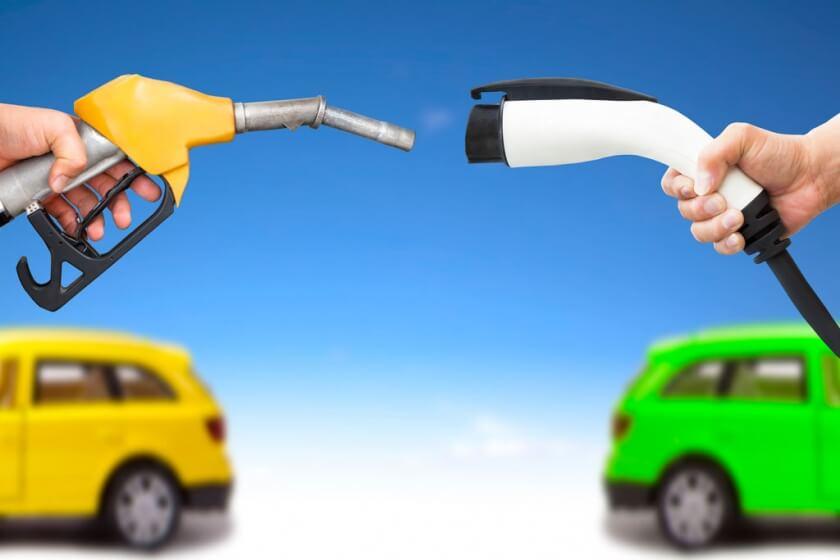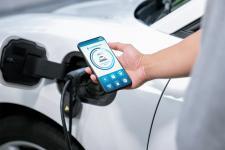What are the costs of maintaining an Electric Car?

With Electric battery technology constantly developing and becoming more affordable, do EVs require more maintenance than internal combustion engine cars? Our Rivervale guide looks at the different types of electric cars available in the UK market and whether they are easier to maintain or not…
What are the different types of electric cars?
There are a range of different EVs available currently in the UK. These include;
BEV (Battery-Electric Vehicle)
A BEV uses only electricity as a power source to make the vehicle drive. Typically, most pure-electric vehicles nowadays offer an average driving range of up to 181 miles before needing to be recharged. However, actual range can depend on a number of key factors: speed driven, driving style, cabin weight, climate control usage and weather, etc. BEVs are quiet, use low-drag aerodynamic shapes, have reduced weight, use highly advanced technology and they are a strong option for motorists who want to dramatically improve fuel-efficiency and reduce fuel costs and lower emissions. Whenever you brake or coast, the regenerative braking system helps to store electricity which in turn recharges the battery.
Current models include;
✔ï¸Nissan Leaf
✔ï¸BMW i3Volkswagen e-up!
✔ï¸Renault Zoe and Kia Soul
✔ï¸Hyundai Kona
✔ï¸Jaguar iPace
✔ï¸Tesla Model S; and
✔ï¸Tesla Model 3
Read more: Find an electric car to suit your budget!
PHEV (Plug-in Hybrid EV)
PHEVs utilise a plug-in battery and an internal combustion engine (powered by either petrol or diesel) to make the vehicle go. It is essentially like a regular hybrid vehicle but with a larger battery pack and can be charged by plugging a charging cable into the power grid. The primary purpose of a PHEV, is that it offers an extended all-electric range capability. Range of PHEVs are extended since you can also switch to using the internal combustion engine whilst travelling on the road. PHEVs give drivers the best of both worlds - for example, they are quiet when running solely on electricity, discharge lower fuel emissions and save you costs on fuel. Overall, PHEVs provide a range of between 10-50 miles using only electric before the petrol engine kicks in, and they can drive around 300 miles (depending on the size of the fuel tank, just like any other car).
Current examples include;
✔ï¸Mitsubishi Outlander PHEV
✔ï¸BMW 330e
✔ï¸Audi e-tron; and
✔ï¸VW Golf GTE.
E-REV (Extended Range EV)
EREVs are powered by a plug-in battery pack and electric motor, as well as an internal combustion engine. E-REVs operate somewhat similar to PHEVs, however, the main difference is that the electric motor always drives the wheels, with the internal combustion engine acting as a generator to recharge the battery when it’s running low. E-REVs can offer a pure electric range between 150-300 miles. This usually promises fuel emissions of less than 20g/km CO2. A common example of an E-REV, is the BMW i3 range extender.
Hydrogen fuel cell vehicles (FCEV)
Hydrogen fuel cell cars are another type of EV that uses hydrogen fuel cell stack technology to convert hydrogen into electricity which then helps to power all wheels of the vehicle. With hydrogen fuel cell vehicles, there is no internal combustion engine, therefore the fuel cell stack technology works more like a battery even though it doesn’t require charging. Basically, the more hydrogen supply it receives, the more power it will continue to generate. When you put hydrogen in, the resulting chemical process creates a flow of electricity and the only byproducts are heat and water. Hydrogen fuel cell cars take only three to five minutes to refuel and have a range of 300 miles.
Currently the market for hydrogen fuel cell cars is limited with only three types of these cars available in the UK;
✔ï¸the Toyota Mirai
✔ï¸Honda FCV Clarity; and
✔ï¸Hyundai ix35.
View our electric/hybrid car leasing prices
Maintenance
An ongoing misconception about EVs is that they are expensive and difficult to maintain. This is far from the truth. In fact, if you keep your car in good condition you will significantly reduce the amount you have to pay towards running and maintaining it, meaning it will be easier to sell when you no longer want it.
How reliable are electric cars?
According to a study in 2017 by What Car?, they found that less than 8% of Nissan Leafs were faulty or damaged across the UK. They found that damages in these cars were limited to three main areas: bodywork, brakes and non-engine electrics. Most of these damages took only a week to fix and were fixed free of charge.
How are they cheaper to maintain?
A combustion engine has more fluids to change and many moving parts, while an EV motor usually has less fluids ( like oil and transmission fluid) to change and has fewer moving parts. EVs don’t suffer from routine break-downs, don’t need regular oil changes, etc, unlike conventional petrol or diesel cars.
The parts in an EV motor are also much easier to replace and they don’t deteriorate as fast. In terms of software related issues and updates, most EV manufacturers (Tesla included) can offer to fix these problems remotely. Like all cars, EVs still have to be serviced. But because they have less moving parts and aren't as complicated in terms of how they operate, they are usually cheaper to service and only require gear oil change once a year.
EVs should be serviced as often as a car with a combustion engine. However, most services are usually deemed as minor and not expensive to repair i.e. checkups performed on brakes, suspension, drivetrain and the condition of the battery and it’s charging capabilities. For example, Nissan says that Leaf costs just £11 a month to service. In contrast, internal combustion vehicles can require servicing like, change of spark plugs, valves, fuel tank, rear exhaust pipes, distributor, starter, clutch, drive belts, hoses, and a catalytic converter, etc.
How long does battery life for an electric car last?
EV batteries can last for around 10 years. Although battery life for EVs usually declines with age and use, EV technology is constantly improving and so is battery life, especially when you consider the way Tesla keep releasing affordable, long-ranging EVs like the Model S, Model 3 and Model Y. A 2017 study found that a Model S will store between 90 and 95% capacity, even at 93,000 miles. After 150,000 miles, a Model S can expect a cutback of electricity supply of just 15%.





